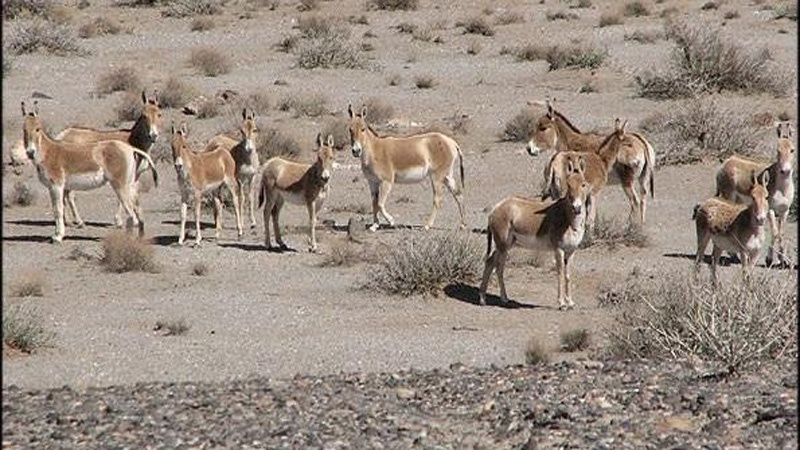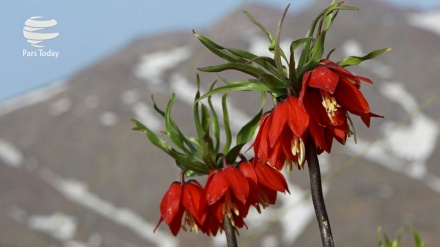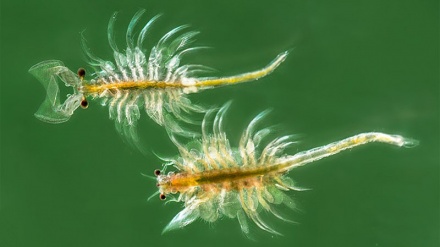Iran’s rare animal and plant species (8)
One of the unique animal species of Iran is the Persian Zebra, which was in abundance throughout Iran’s plains and steppes, a while ago. However, unfortunately, it has been currently included within the endangered animal species.
Persian Zebras are a subspecies of Asiatic wild ass. In the past, there were large numbers of “Asiatic wild ass” in Middle East, Central Asia, and China. However, these animals have gone extinct in the majority of these regions, with a sparse number of these animals remaining in Iran. This animal is relatively larger than donkeys and weighs around 290 kilograms. The length of its body and head exceeds two meters. It has shorter legs compared to horses. Persian Zebras’ lifespan stands around 40 years; and it maintains powerful eyesight, sense of hearing, and sense of smell.
Persian zebras are not covered with black and white stripes. They are brownish in color. A black stripe is observed on their backs, surrounded with a shade of white. This animal’s color changes in different seasons. In the summertime, it is reddish brown in color, and in the cold season, its color is yellowish brown. They have a black mane on their necks.
The color of the Persian zebras assists its camouflage in nature; which comes very handy given that in addition to hunters, these zebras also fall prey to other predatory animals, which maintain a joint habitat with Persian zebras. Wolves are among the predatory animals which attack Persian zebras, in groups, while patiently chasing their baits. Persian zebras cover long distances at a speed of 50 kilometers per hour in order to save their lives. Meanwhile, wolves do not fall behind as such in this race. In the meantime, Persian zebra foals are more exposed to the threats posed by these predatory animals. The predatory animals harm Persian zebras to a lesser extent in comparison to humans. The contemporary man indifferently targets and shoots these rare animals, while shrugging off the consequences of such misdeeds.
Persian zebras usually feed on plants. They are highly dependent on water. In summertime, they are usually spotted next to troughs; the distance of which to the grazing lands exceeds 15 kilometers. This animal is active throughout the day and is often spotted, early morning and afternoon. It is also active in unsafe regions at nights. Persian Zebras live in groups.
Their mating season is around mid-June. Concurrently, the male Persian zebras confront each other, kicking and biting their rivals. The male Persian Zebras often lose part of their tails in these confrontations. The pregnancy of female Persian zebras lasts a year. At the time of birth delivery, the female Zebra departs its herd. Upon birth, the zebra foals have sufficiently grown; and after a short while follow their mother. The female Persian zebras appropriately defend the Zebra foals against predatory animals. The zebra foals often reach puberty at the age of three. The female Persian zebras usually give birth to foals once every two years.
In the past fifty years, two third of Iran’s territory was the habitat of Persian zebras, and large numbers of Persian zebra herds were observed in many regions of the country. However, poaching and destruction of habitats left major adverse impacts on them. Currently, the habitats of this animal are in Fars Province in southern Iran; a conservation area in Semnan Province in central Iran; Sarakhs frontier region in eastern Iran; and parts of Yazd Province in central Iran. In accordance to latest census, more than 650 Persian zebras live in “Bahram-e Gour” protected region in Fars Province, which shows a significant rise in numbers compared to the past. This goes to show that thanks to the relentless efforts of environmentalists in Islamic Republic of Iran, this rare animal has reached an appropriate state.
MR/SS



